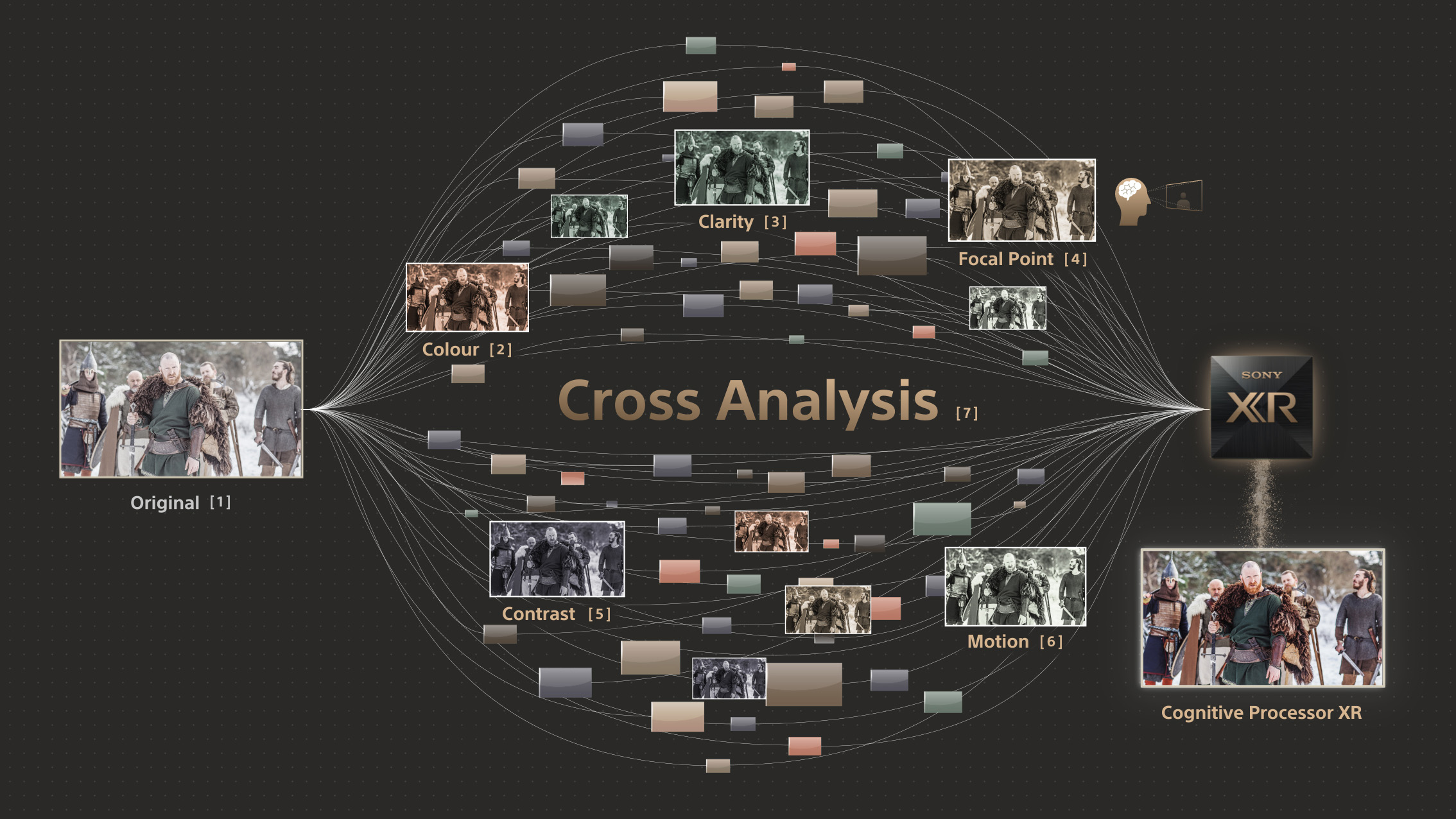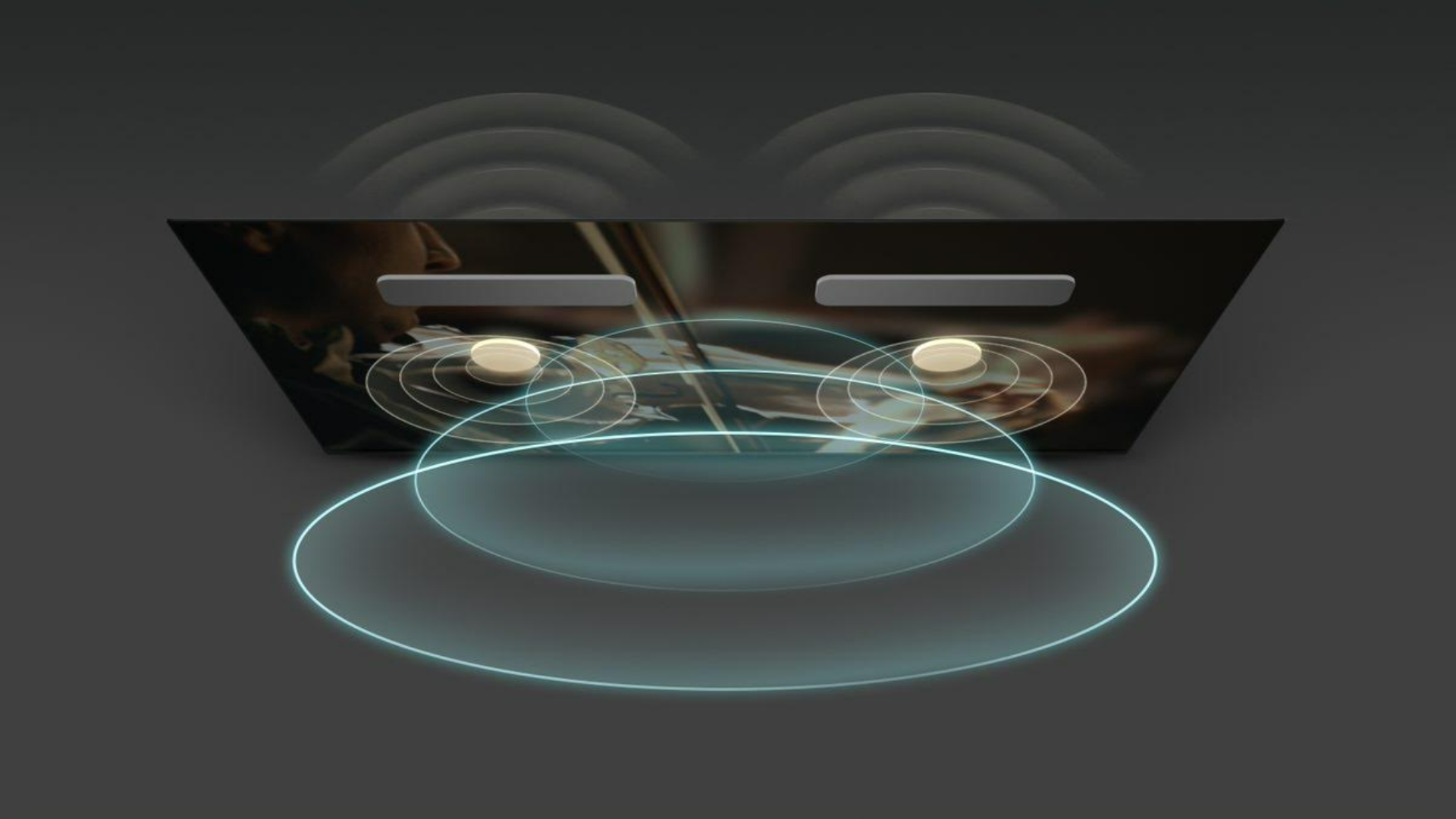Sony has announced its range of Bravia XR TVs for 2022 and beyond, and we’ve already called the flagship Sony Bravia A95K an “early front-runner for screen of the year”.
It has a next-gen QD-OLED panel for enhanced color and brightness, OLED’s signature perfect contrast, and advanced gaming features like VRR and Auto Low Latency. But from a techy perspective, the bespoke Bravia XR chip with cognitive intelligence is perhaps the most interesting Sony Bravia A95K feature of the lot.
All TVs use some form of processing to enhance the picture, whether you play games, watch movies or TV. However, Sony was the first to implement what it calls “cognitive intelligence”.
It refers to the way the Bravia XR chip’s picture processing emulates how our brains process what our eyes see. And because that happens inside our heads without us really thinking about it, we’ll have to break down why this really matters.

How cognitive processing works
When the Sony Bravia A95K is fed an image it cross-references thousands of data points to inform how it handles the picture. For example, it can recognise the focal point of a scene. That could be the lead actor or, as in one of Sony’s own demos, a train moving across the screen.
Creating clear, or subtle, focus points is part of the language of cinema. It is something we appreciate intuitively, and the Cognitive Processor XR understands this technique too.
TVs like the Sony Bravia A95K are also capable of depth mapping, analysing the image to determine which elements are part of the foreground or background. This not only helps in identifying the all-important point of focus, where our eyes are naturally drawn, but also gives Sony Bravia XR TVs a better understanding of the scene as a whole.
For example, you may want to see enhanced sharpness in a close-up shot of a sunflower, to bring out the fine details of its pollen-carrying anthers as the flower blows in a breeze. But you wouldn’t want to apply the same technique to the background behind the flower, blurred by a beautiful wide-aperture cinematic camera lens.
The aim is to deliver highly effective image processing without the picture appearing “processed” because a natural result is always going to look better.
Other crucial elements the Bravia XR chip analyses include color and contrast, completing the list of every core characteristic we consider when reviewing a TV’s picture quality.

Why it matters
All this clever behind-the-scenes work will impact almost anything you choose to watch on your TV. Play a 1080p movie and XR 4K Upscaling informs how the picture is rebuilt for a 4K display, with the knowledge the focal plane is where the opportunities for “restoring” detail missing from the source lie.
Smarter processing is also a huge benefit when dealing with fast motion. Frame interpolation generates additional image data when the source’s frame rate doesn’t match the refresh rate of the TV. In the case of the Sony Bravia A95K this is 120fps, a rate only achieved by high-end PCs and consoles in select games.
Frame interpolation can make motion appear much smoother, and the added intelligence of the Bravia XR chip lets Sony TVs avoid distracting motion artifacts. Once again, the focus is on creating a natural-looking picture.
Sony introduced Bravia XR cognitive intelligence in 2021 with its last generation of TVs, but the 2022 set includes a couple of important improvements. Depth mapping has been improved and HDR upscaling tweaked to fully utilise the immense color depth of QD-OLED sets like the Sony Bravia A95K.

Sound improvements
Bravia XR cognitive intelligence’s skills are not restricted to picture quality either. Bravia XR TVs can judge where important objects and people are in a scene, and the virtual surround audio uses this information to create a 3D sonic effect even in source material with a basic stereo audio track.
Sony Bravia TVs’ Acoustic Surface Audio speakers are built into the screen surface itself, vibrating the screen to create sound, and can make sound appear to come from above or even behind the viewer — all without any additional speakers that might clutter up your living room.
Sets with Sony’s Bravia XR Cognitive Intelligence technology include the A95K, which comes in 55-inch and 65-inch sizes, the A90K in 42-inch and 48-inch, the A75K in 55-inch and 65-inch, and A80K in 55-inch, 65-inch and 77-inch. Plus, the A90J will be available for 2022, in 55-inch, 65-inch and 83-inch.. All are available to pre-order today.
from TechRadar - All the latest technology news https://ift.tt/RMpOVP3
No comments:
Post a Comment